Mini Cooper 2010 News
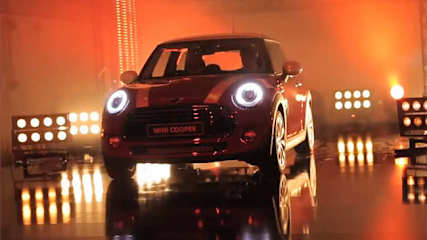
New Mini unveiled | video
Read the article
By Staff Writers · 22 Nov 2013
The new Mini arrives here early next year with new efficient engines, a larger body and some changes to styling, but largely continuing with the signature design recipe.
It has however grown 98mm in length to 3821mm, 44m in width to 1727mm and 7mm in height to 1414mm on a 34mm longer wheelbase at 2495mm to give more cabin room and an additional 51 litres of luggage space.
There's big news under the skin too, where the Mini debuts the new UKL platform that will in time underpin more new Minis and some new models from parent company BMW.
Watch the 2014 Mini Cooper unveiling video on our desktop site.
_______________________________________
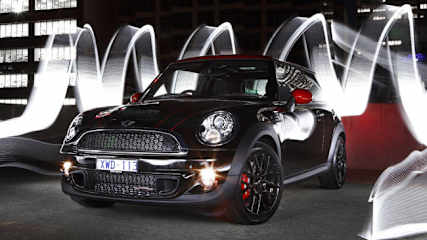
Mini John Cooper Works get new engine
Read the article
By Karla Pincott · 21 May 2012
The new unit is based on the one in the 1.6-litre Mini Cooper S, with twin-scroll turbocharger, direct fuel-injection and variable valve control. The turbocharger is tweaked for extra boost and the engine has been fitted with a new high-performance exhaust system – finished with twin stainless-steel tailpipes.
Engine outputs are 155kW of power at 6000rpm, and 260Nm of torque from 1850-5500rpm, with 280Nm available for a few seconds on overboost between 2000-5200rpm.
It will be mated to a six-speed manual transmission as standard, but there will still be the option of a six-speed automatic with a manumatic mode and shift paddles mounted on the steering wheel.
Mini says the new engine gets a weight-saving aluminium block and bearing mounts, lighter crankshaft, reinforced pistons and a high-strength cylinder head.
The manual transmission gets a fuel saving stop-start system, and the load on the electrical system is reduced by brake energy recapture with the alternator disengaging at high revs – combining to cut your fuel burn by about 500ml per 100km.
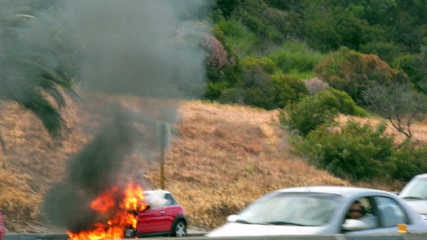
235,000 Mini Cooper S recalled
Read the article
By Stuart Martin · 17 Jan 2012
High performance versions of the Mini Cooper are being recalled worldwide to fix an engine problem that could potentially start a fire.More than 235,000 of the turbocharged Cooper S models built between 2006 and last year are being recalled worldwide to remedy a secondary water pump fitted to cool down the turbocharger.The company has global reports of just over 80 water pump failures and four fires as a result, but BMW Australia and local authorities have deemed the program here to be a technical service campaign,Mini Australia spokesman Piers Scott says just over 3700 Cooper S (of which one may have experienced the smoldering engine bay issue) and John Cooper Works vehicles built between 2006 and 2011 are effected in Australia."This was deemed to be a technical campaign, in-line with similar campaigns conducted in the past," he said.Mr Scott said the use of the term `recall' overseas to describe the issue."It is the Department of Infrastructure and Transport that we liaise with locally and they would advise us if it were to be a safety Recall.""There is no less urgency under a technical campaign - replacement parts are now in the country and Mini Australia has already begun contacting affected customers," he said.The worldwide recall of 235,000 cars includes 29,868 in the UK and 89,000 in the US and involves replacing the water pump free of charge.The company head office said that the turbocharged engines are fitted with an additional water pump to remove residual heat from the turbocharger after the engine was switched off."Under high operating temperatures an electro-migration can occur at the circuit board installed in the additional water pump," it said."This can lead to a failure of the additional water pump or smoldering and even a fire cannot be excluded."More than 200,000 Minis are built each year at the company's Oxford plant, where production started in 2001and recently passed two million vehicles built - the car is exported to more than 90 countries.The turbocharged engine is shared with Citroen and Peugeot, but both French companies said there engines employed different electrical systems.
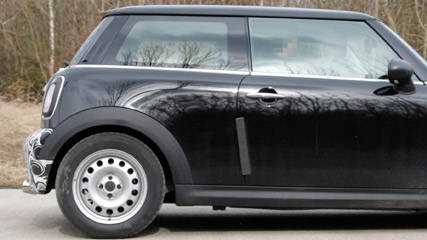
Mini Cooper S | spy shot
Read the article
By Paul Gover · 01 Apr 2010
So the 2011 Mini Cooper S facelift photographed by Carparazzi in Europe is essentially … more of the same.There are some small changes in terms of a revised air intake and it’s likely there could still be a surprise under that bumper camouflage. Some attention has also been paid to the light clusters, with the rear set now sporting LEDs.However, with the increasing pressure of emissions regulations, the Mini is also likely to have some upgraded engine technology aimed at reducing CO2 while improving outputs.Insiders are tipping that a variable-valve system will be added to the current 128kW/240Nm turbocharged 1.6-litre petrol engine, while the naturally aspirated 88kW/160Nm version will also be tweaked – although there are no hints of how much it will increase the outputs of either.

BMW confirms front-wheel drive
Read the article
By Karla Pincott · 18 Mar 2010
The German prestige brand has always vowed they’d never venture into the front-wheel drive field. But reports overnight from Europe quote BMW boss Norbert Reithofer confirming that a small BMW will be built on the front-wheel drive Mini Cooper platform."There will be front-wheel drive BMWs in the smaller vehicle classes in the future,” Reithofer stated at the carmaker’s annual shareholder and financial meeting in Munich yesterday.“This segment is expected to grow further. And we will take advantage of this opportunity,” Reithofer said. “We are exploring the possibility of developing a joint architecture for the front and four-wheel drive systems of these cars. We all know that the cost structure in the small car segment is different from that of the larger model classes. We intend to grow profitably in this segment as well.“Because there is one element that applies to the entire process chain: We will increasingly apply modular manufacturing kits to various models and brands. This approach enables us to cut costs further – without compromising on top quality.”The mini BMWs – as opposed to BMW Minis - that result from this strategy are likely to be strong contenders for supremacy in the sprouting luxury subcompact segment. And they would improve the badge’s average fuel economy and emissions – which would boost their ability to comply with coming legislation not only in Europe but in the huge US market.But the jury will be out for a while on what it might mean to the brand value after years of trumpeting the perceived dynamic superiority of rear-wheel drive. However in a world that is seeing Aston Martin re-badge a tiny Toyota, it seems the old-school rules and boundaries may be losing relevance.A new generation of young buyers – possibly looking for a cheaper doorway into a prestige brand – will probably care more about the badge on the front of the car than about which set of wheels is driving it.And some of those could well be here, with BMW Australia saying they would definitely look at importing it. “We’ll consider it in our planning once it’s available,” BMW spokesman Tim James says. “But at this stage we haven’t got any advice on the timing.”James agrees the subcompacts would slip in well underneath the current 1 Series, but says there is little concern about cannibalisation of sales. “BMW would have conducted thorough research and have obviously identified a market,” James says. “So for them to proceed and go in this direction means they think there would be only minimal risk of cannibalisation.”And despite BMW often – and strongly – stating that rear-wheel drive is the mark of true driving dynamics (most publicly when a former Australian boss declared Audi was not a competitor because they had no rear-drive cars) James says the front-wheel news is unlikely to dilute the brand image.“At BMW, everything they do, they always engineer to the highest standards,” James says. “They won’t bring anything to market that isn’t a true BMW – that isn’t the ultimate driving machine in its segment.“It won’t come with a negative connotation. And we do consider Audi a competitor in our market – whether it’s their front-wheel or all-wheel drive cars, Audi’s in the mix.”
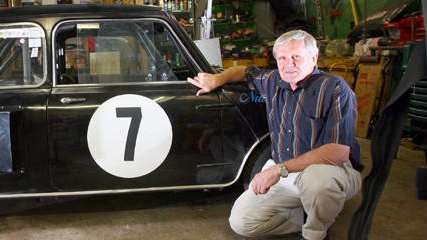
My 1964 Mini Cooper S
Read the article
By Mark Hinchliffe · 08 Mar 2010
Mini designer Alec Issigonis and performance tweaker John Cooper had a brain explosion in 1964 and developed a model with twin motors. Cooper crashed it, spent eight months in hospital and the idea was officially shelved. It hasn't stopped many backyard mechanics from having a go ever since, including Brisbane dentist Bill Westerman."Five years ago I was drinking beer with my friend Fred Sayers and we both decided to build one," he says in his garage littered with Mini engines in various states of rebuild. "Right from the word go — when the hangover cleared — we got stuck right into it."His 1964 Mini Cooper S with a "worn-out" 1293cc engine in the front and another in the back is called "Nuts". "Because you have to be nuts to drive it and it's better with two," says Westerman with a cheeky grin."I don't know what I paid for this one. It came from a shell. I had a shed load of Minis at the time. It's a sickness, you know."The graduate dentist began learning his mechanical skills from his first car which was a composite Series II Land Rover he made from two he bought at auction. His love of Minis started with his second purchase in 1969 when he bought a new Cooper S for $2500 and headed off to work in outback Waikerie, South Australia."I realised fairly quickly that what you really need in the outback is a V8, so I bought an XY Falcon ute," he says. "It went through a set of tyres every 6000 miles (9656km), a set of shocks every three months and universal joints at least once a year over those corrugated roads."His next car was a modified VB Commodore V8 wagon donated to the young dentist by Holden. He had it about five years before returning to Brisbane, more study at the University of Queensland and the start of his amateur career racing Minis from 1986 to today."The aim was to race all the circuits in Australia and I've just about done that except for Perth and Darwin," he says. "I've had a lot of fun. Racing has been very good to me. I've always been in the middle of the pack because I didn't spend enough money on the race car to win."His efforts to get more power out of a Mini and get further to the front of the pack led him down the ignominious Issigonis path of a twin-engined model. "We were worried after the first drive as it was an extremely difficult beast to keep on the road," he says. "There has to be co-ordination between the two motors. The gearing is the same and all the internals in the engine are the same, but we set the front so it was revving slightly harder so there is a bit of a pull factor."The revelation that kept the beast on the road came from an article in a 1960s Sportscar World magazine about the Formula One Ferguson all-wheel-drive race car. "We got a lot of hints from that; you need an overdrive diff on the front and back," he says. "We put one in the front and it made a bit of a difference and then we put one in the back and all of a sudden it goes. The diff takes up the front-to-back bias. It used to crab before that."The other major problem was the suspension. "Minis usually understeer, but this one was really taily at the start, not because of the weight in the rear but the front suspension we put in the rear. The problem was the back castor ... it had too much toe-in and we had to remove it. Instead of a steering box and steering geometry we made it into a straight-ahead suspension. Now I can drive it over all the ripple strips and still maintain control of the car. We have handling reasonable so now we are after more horsepower."Two more powerful engines in various stages of rebuild are sitting on the floor of his garage waiting to be thrown into the "Nuts" car. "I have the theoretical knowledge of mechanics to build an engine but Fred has the practical knowledge to make it work," he says. "It's been an interesting engineering exercise."Unfortunately, the car won't be ready in time for the second annual Cootha Classic hillclimb which Westerman organises for the Historic Racing Car Club of Queensland. "Maybe next year," he says.The Cootha Classic will be held on May 29-30 featuring more than 250 cars and about 50 motorcycles from the 1920s to today in timed sprints around a 1450m track up and down Sir Samuel Griffith Drive with seven corners and chicanes.Racing starts at 8.30am. Entry is $20 a day, $15 for concession, $30 for a two-day pass and $5 for parking in the J.C. Slaughter Falls carpark.Visit: www.visitbrisbane.com.au.

Decade of diesel
Read the article
By Mark Hinchliffe · 06 Jan 2010
Back in 1999, the only diesel-powered vehicles on the Australian market were sports utility vehicles, light commercials and trucks.

Battle for fuel crown
Read the article
By Keith Didham · 06 Oct 2009
Car companies are about to be put to the test in the Global Green Challenge and Carsguide is going along for the ride. There are two key buzz words in today's world of clean, green motoring: more and less.Car buyers, pricked by an environmental consciousness, are driving demand for better efficiency to reduce the impact on their wallet and less emissions to reduce the impact on the environment.And there's an added caveat to this quest for green sustainability: it has to be affordable without robbing the family car of performance or driveability.Welcome to the challenge facing car designers as they chase motoring's holy grail — producing a workable, green friendly car for the future. A bookmark of just where the industry is at will be on display at the end of the month when the Eco Challenge for production cars, run in conjunction with this year's Global Green Challenge, sets out from Darwin on October 24 and heads south to Adelaide.It will be real-world 3000 kilometre reality check, albeit most of the driving will be on highways, to show buyers what more-for-less cars are available now, or the near future.This week car companies have been jostling as they line up for the starting grid — some have still to fully show their hand but organisers say 21 cars are expected to contest the Eco Challenge while a further 38 dedicated solar-powered cars will also follow the same route the following day in their own race.This year's production car field is an eclectic mix.Hyundai Hyundai is using the Global Challenge to launch its 2010 Santa Fe wagon, promising more power and reduced fuel consumption which will attract caravan owners looking for an alternative to heavier 4WDs.Hyundai's Team R has entered two Santa Fes, one of which will be driven by CarsGuide. The wagon gets Hyundai's new R turbo diesel and a new six-speed manual transmission along with a recalibrated suspension and steering package for our tougher road conditions. A six-speed automatic will be optional. The Santa Fe goes on sale at the end of the year.Skoda Skoda will use the event to showcase its new flagship, the Superb saloon. Skoda says the 2-litre direct injection turbo diesel is capable of 5.4l/100km on the highway, meaning you can marry luxury with economy.Suzuki will use the event to showcase the ability of the tiny Alto, which the carmaker claims can travel 100 kilometres on just 3.5 litres of precious fuel on the highway. Tests in India have already shown it can do better at 3l/100km.The car is being kept on the road by a team of apprentice automotive engineers from the Melbourne's Kangan Batman TAFE college.Holden Holden and Ford will be fighting each other in the Challenge. Holden had been tipped to show of a Commodore, which like Saab, can run on 85 per cent ethanol, or a diesel, but the General will instead showcase its recently launched 3-litre Omega Sportwagon, fitted with the new SIDI (Spark Ignition Direct Injection) engine and six-speed automatic transmission.Holden won't reveal what fuel economy goal it is aiming for but it maintains the SIDI is now the most fuel efficient Aussie-built six-cylinder in the market. Holden says the engine, rated at 9.3l/10km is 13 per cent more fuel efficient than the previous motor at 10.7l/10km.Ford Ford will come out fighting with an XR6 Turbo and a Fiesta Econetic which will be launched in November and has the potential to run at 3.7l/100km. Again, Ford won’t talk about economy goals.BMW BMW is another keeping its cards close to its chest until closer to race. It will have a fleet of three diesel Mini Ds, one of which is will be driven by former Le Mans winner Vern Schuppan. The 1.6-litre Mini diesel is capable of 3.9l/100km combined and 3.5l/100km on the highway.Tesla While all eyes will be on the known brands, one entry which will likely steal the limelight will be the all electric Tesla roadster — the world's first production all-electric car which is being entered by broadband company Internode.The company's managing director Simon Hackett imported the first car to Australia recently.Kia Kia has entered two LPG electric hybrid Fortes, which have a 1.6-litre four-cylinder petrol engine mated to a small electric motor and lithium-polymer batteries — a first for a mass-production small automatic car. Kia says it can return 5.6l/100km.Based on the Cerato, the Kia Forte has the potential to make it to the Australian market next year for less than $30,000. Based on the Cerato The Forte was launched in South Korea in August and displayed at the Frankfurt Motor Show last month.NON-PRODUCTION AND EXPERIMENTAL CARS Independent team Deep Green Research has come to the party with an electric Honda.Students from South Australia's Annesley College have built a petrol/electric hybrid Holden Viva. The all-girl Annesley team has taken part in previous solar challenges but this is the first time they have entered the production car class. The students will be driving the car on the 3000km journey.Research and development company Intex is entering a four-cylinder petrol Ford Spectron Van with a retrofit hybrid system that converts the drivetrain to a plug-in hybrid electric.Absent This year Toyota is a notable non-starter after impressing in 2007 with its Prius.And there has been a late scratching with Volvo confirming it was withdrawn its two C30 DRIVe hatchbacks because they are stuck on a ship from Europe, a victim of stormy weather in the Atlantic. Volvo had high expectations for the 1.6-litre diesel which sips a claimed 3.8l/100km. The eco hatch will now be launched in Australia early next year.
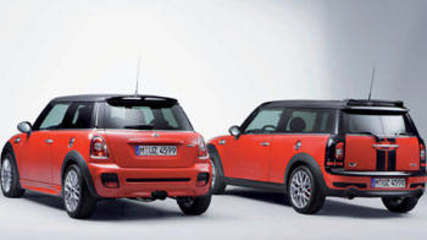
Mini Red hot
Read the article
By Stuart Innes · 25 Jul 2008
THE Mini brand makes no bones about it: its new cars will be `a pair of red-hot racers for the road'.Cashing in on the interest of the Mini Challenge race car series around Australia, the new John Cooper Works Mini and Clubman (station wagon) will run high-performance versions of the 1.6-litre engines used to power the familiar Cooper S along with other hot-up bits. Light alloy 17in diameter wheels, red caliper performance brakes and a new exhaust system are part of the go-faster kit on the John Cooper Works versions.“These cars will bring the thrill of the race track to the road,” says Mini national manager Justin Hocevar. “We are excited that these red-hot models will be coming to Australia at the same time as our Mini Challenge race series will be showcasing Mini handling and performance prowess at race tracks around Australia.”The engine has been uprated to generate 155kW of power at 6000rpm - not bad from a 1.6-litre motor. Torque is a good 260Nm on tap from 1850rpm to 5600rpm. But there's an over-boost system in the turbocharging, allowing a temporary 280Nm between 2000rpm and 5300rpm.The engines use aluminium cylinder blocks and bearing housings, twin camshafts and exhaust valves filled with sodium to better handle the cooling requirements.The John Cooper Works cars have reinforced and specially-ground pistons and special material for intake valves and valve seat rings to make them more resilient. The two-door and Clubman wagon have aero packages and sports chassis of springs finished in red, as well as rear spoilers and perforated brake discs.Mini says the cars are the first front-wheel drives to have the Dynamic Stability Control from parent company BMW.It allows the threshold at which these systems intervene to be raised, so allowing an amount of slip on the driving wheels. Stability control can be switched off, too.The standard Mini Cooper is no slug, especially if the road has some tighter twists and turns. It will accelerate to 100km/h in 9.1 seconds and run to 203km/h. The Cooper S does the sprint in 7.1 seconds on the way to 225km/h. The John Cooper version clocks 6.5 seconds and 238km/h or in the Clubman wagon 6.8 seconds and 238km/h. The Clubman weighs 75kg more than the two-door.The John Cooper Works versions get a six-speed manual gearbox (no auto option) that has been beefed up to take the high torque loads.They are performance cars but are still gentle on petrol use and emissions. The two-door Works car averages 6.9 litres/100km and the Clubman 7 litres/100km. Emissions are 165g/km and 167g/km.

A Mini Challenge
Read the article
By Stephen Ottley · 07 Sep 2007
The new Mini Challenge will hit Australian racetracks in style with a spectacular opening race next year, probably at the Australian Grand Prix.Though Mini Australia spokesman Alexander Corne can't reveal details of the new series calendar, he says it will have a big beginning.“I can't confirm anything specific but we want to start things off with a bang,” Corne says. “We want to put the Mini Challenge in front of the widest possible audience.”Mini already has a history at the Australian Grand Prix, it provided the cars for the Celebrity Challenge in 2002.Negotiations about next year's calendar are taking place with several key stakeholders. It is likely to support the V8 Supercar Championship and run alongside the Porsche Carrera Cup. According to Corne several parties have already shown interest in the category.Mini will unveil the new-for-2008 Challenge racer at the Frankfurt Motor Show in October. The new cars will be built at the company's English factory and be race-prepared in Germany before coming here. The plan is to try to have a race car here later in the year to help promote the new series to competitors and fans.Next year, cars will use a turbocharged version of the engine, replacing the previous supercharged model. They will produce the same amount of power, 154kW but the turbo engine delivers better torque and mid-range performance.Another addition is a limited-slip differential to improve traction in tight corners.The company has also improved the cars' aerodynamics to improve performance and keep the racing close.The Challenge racers will do 0-100km/h in 6.1 seconds and have a top of 240km/h.




